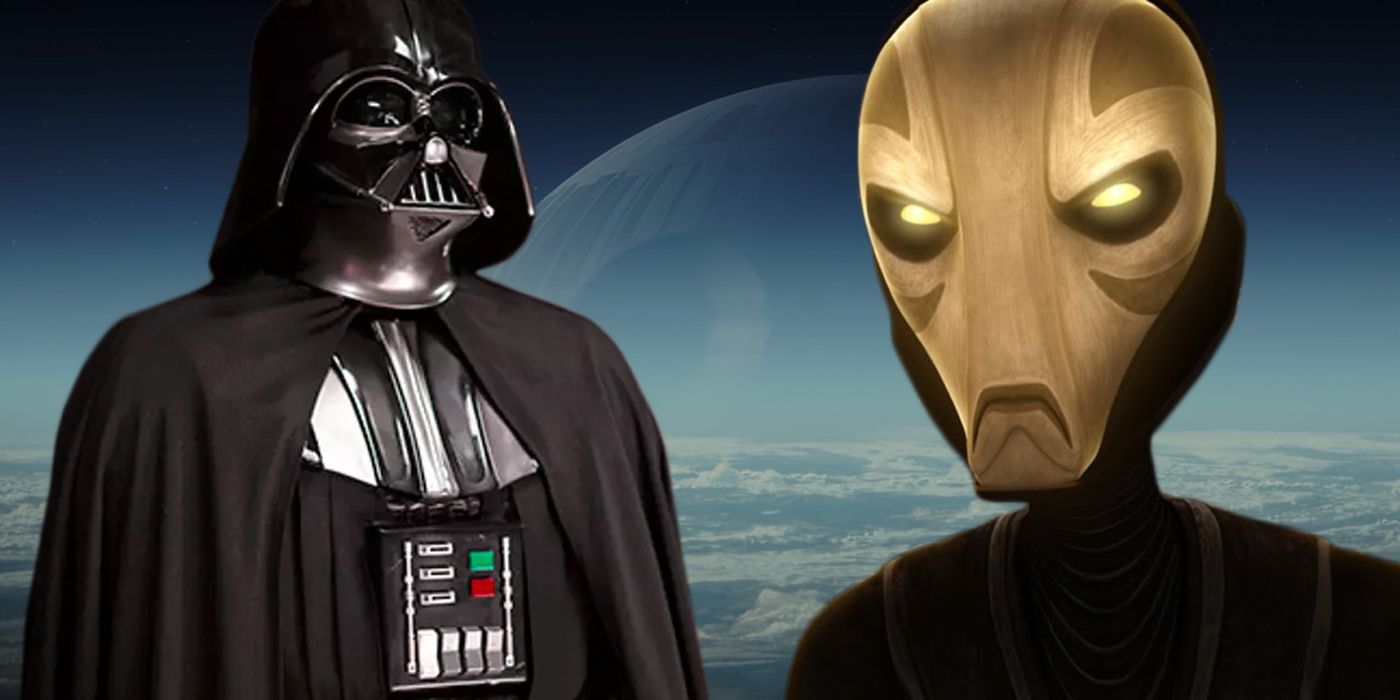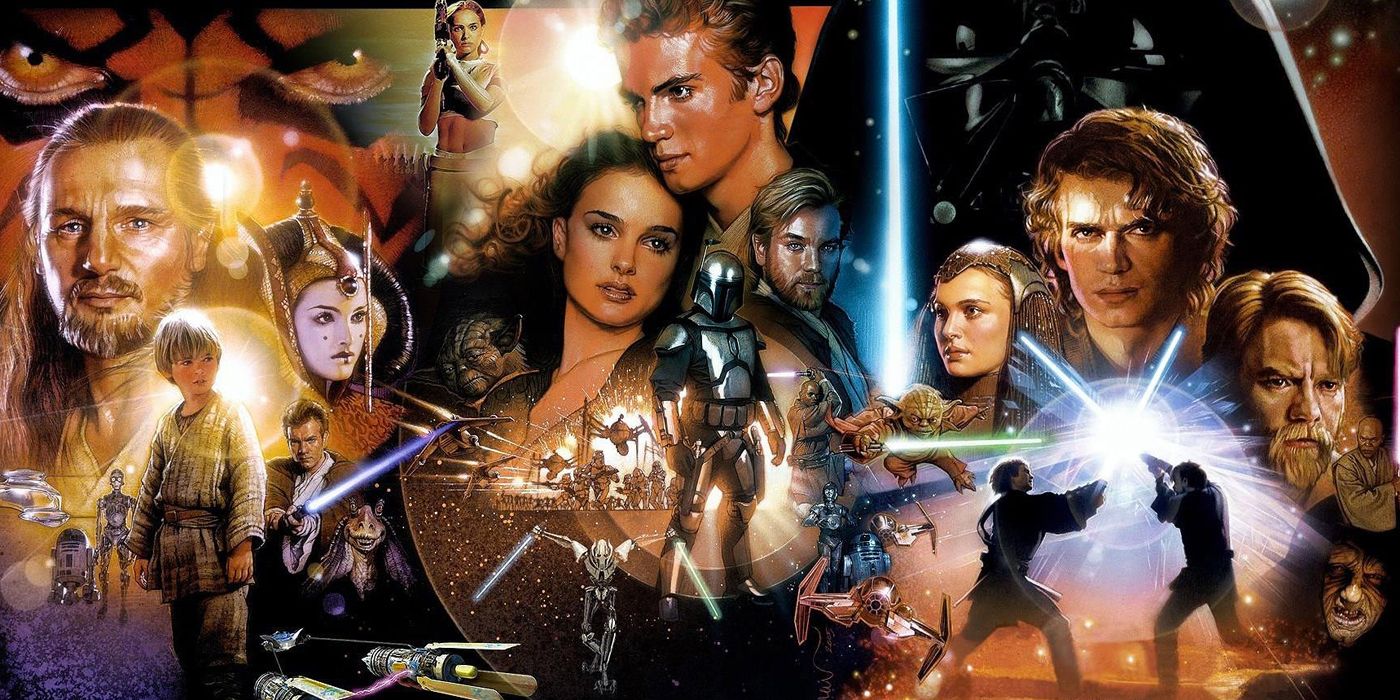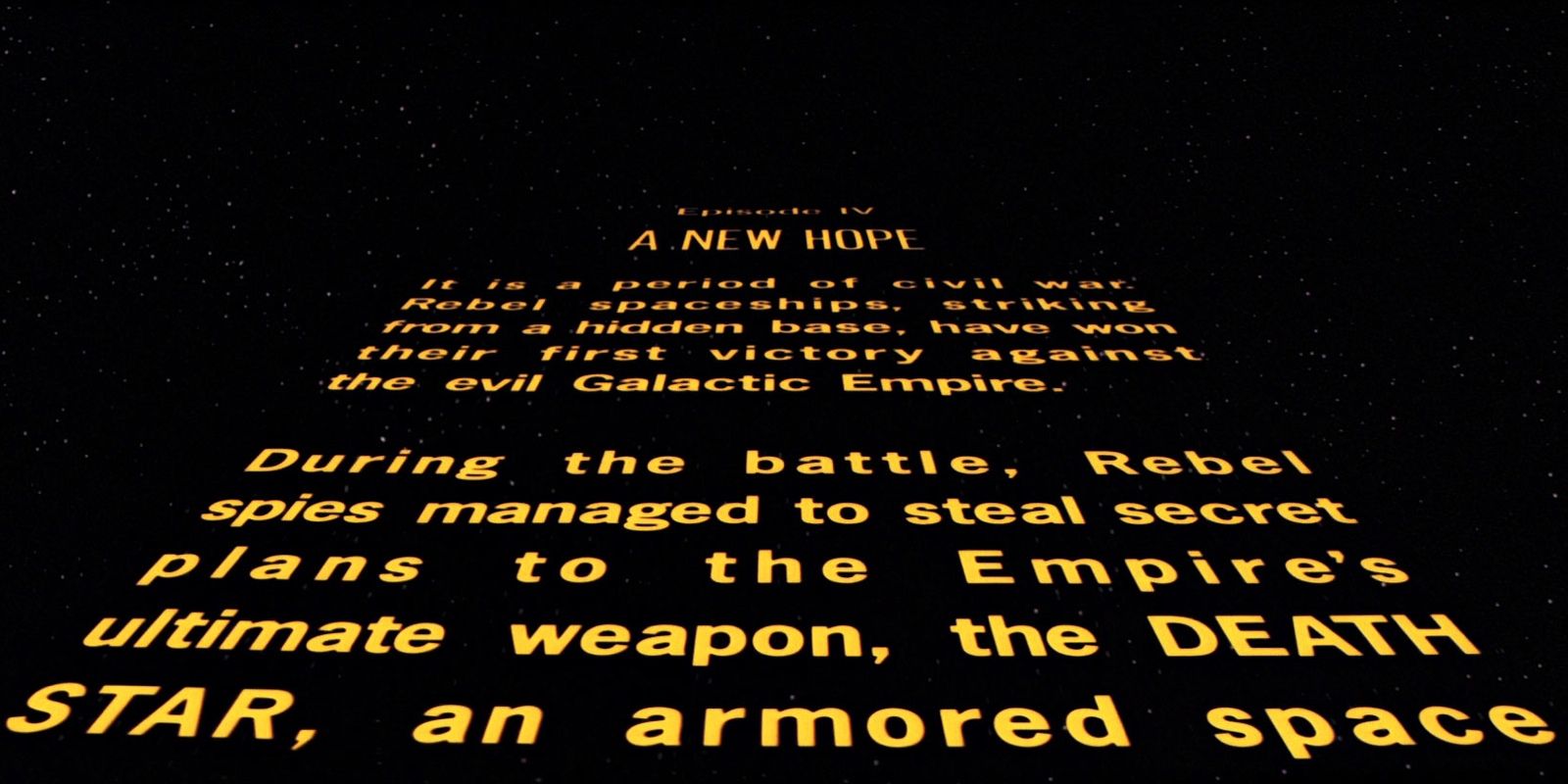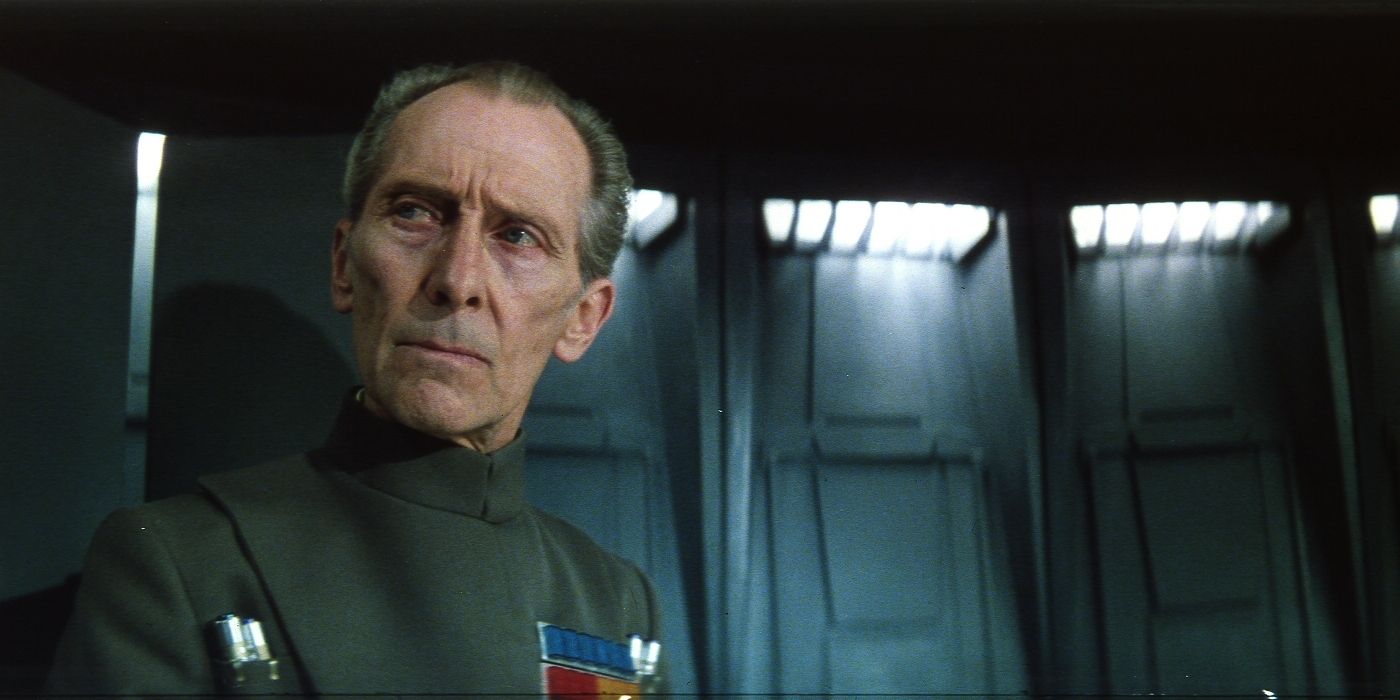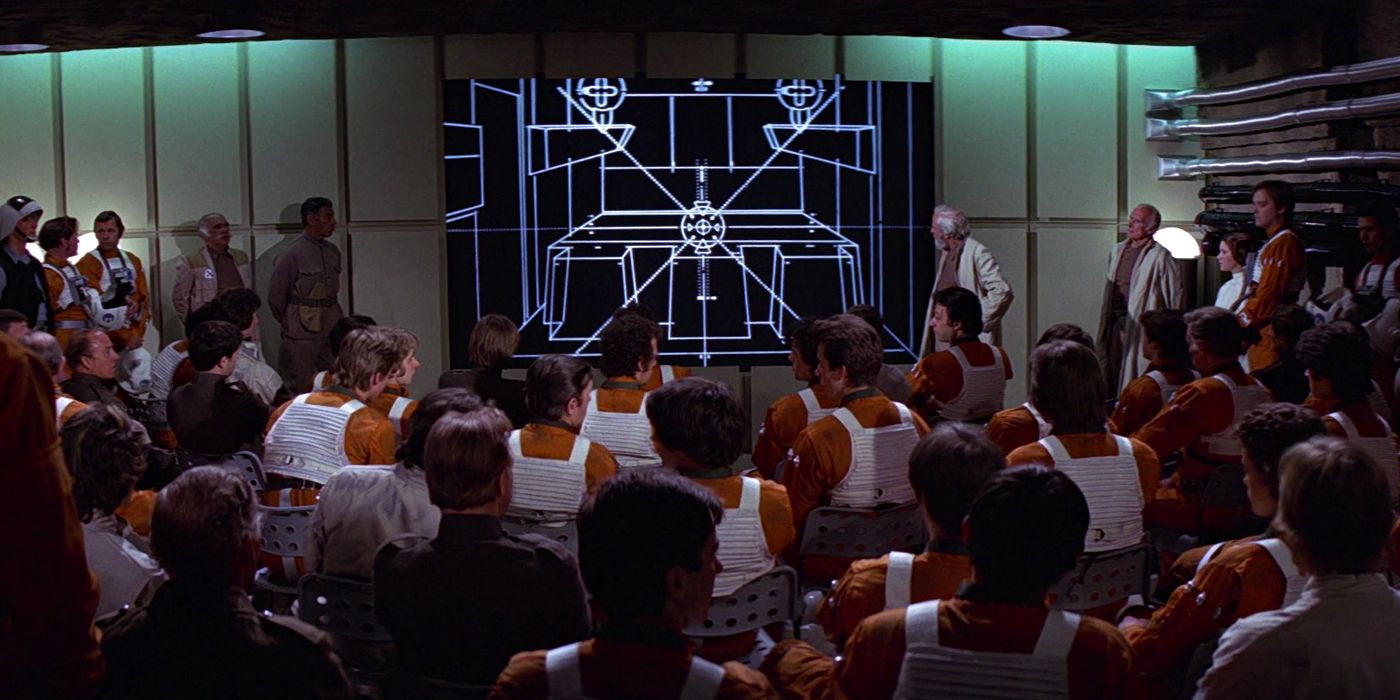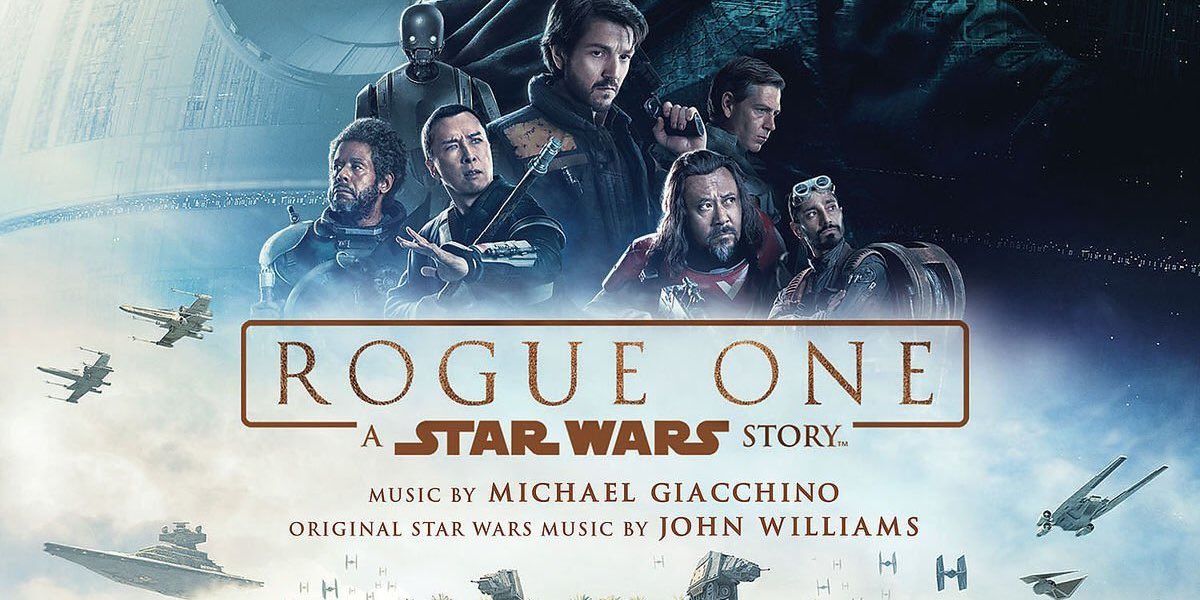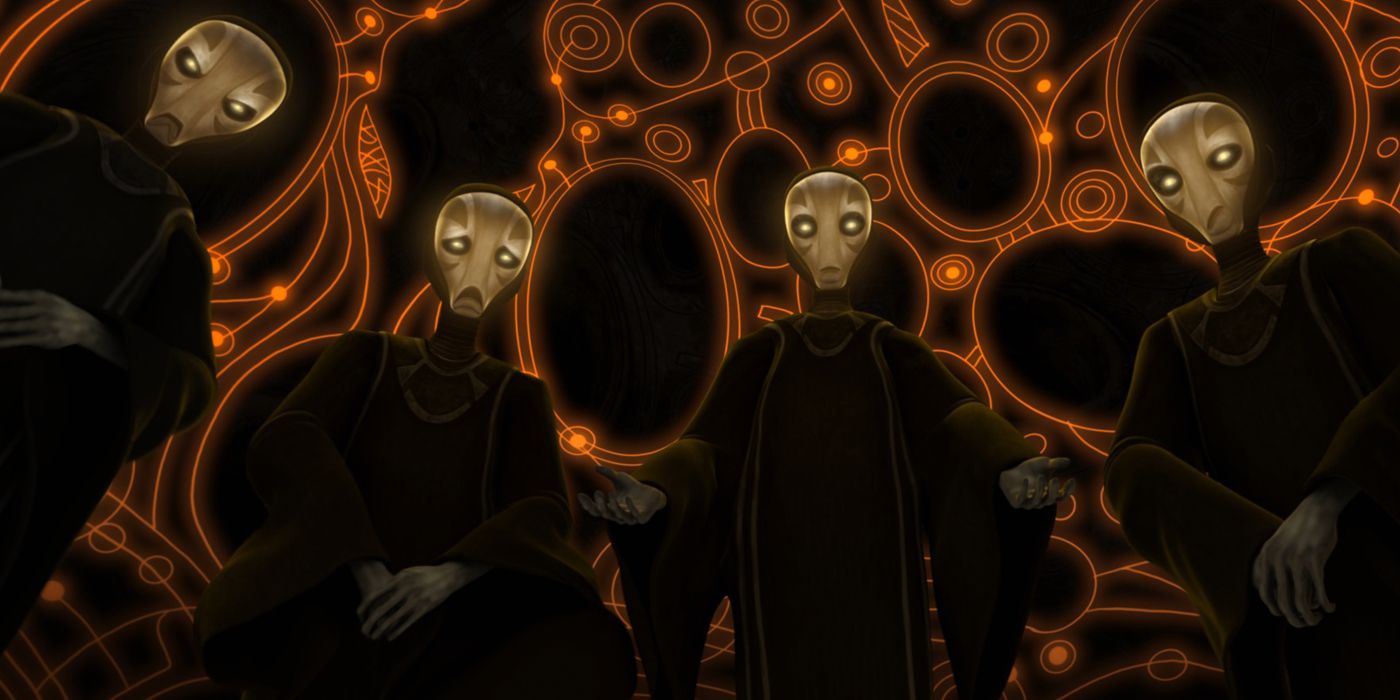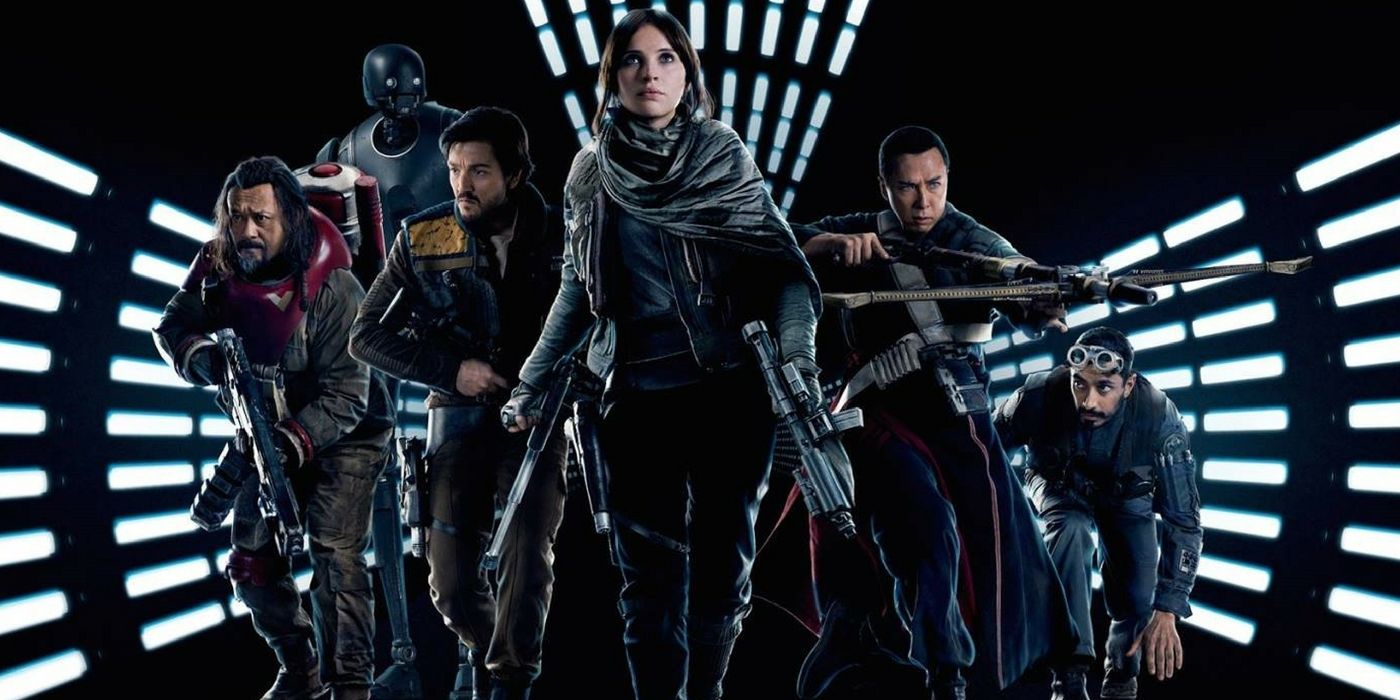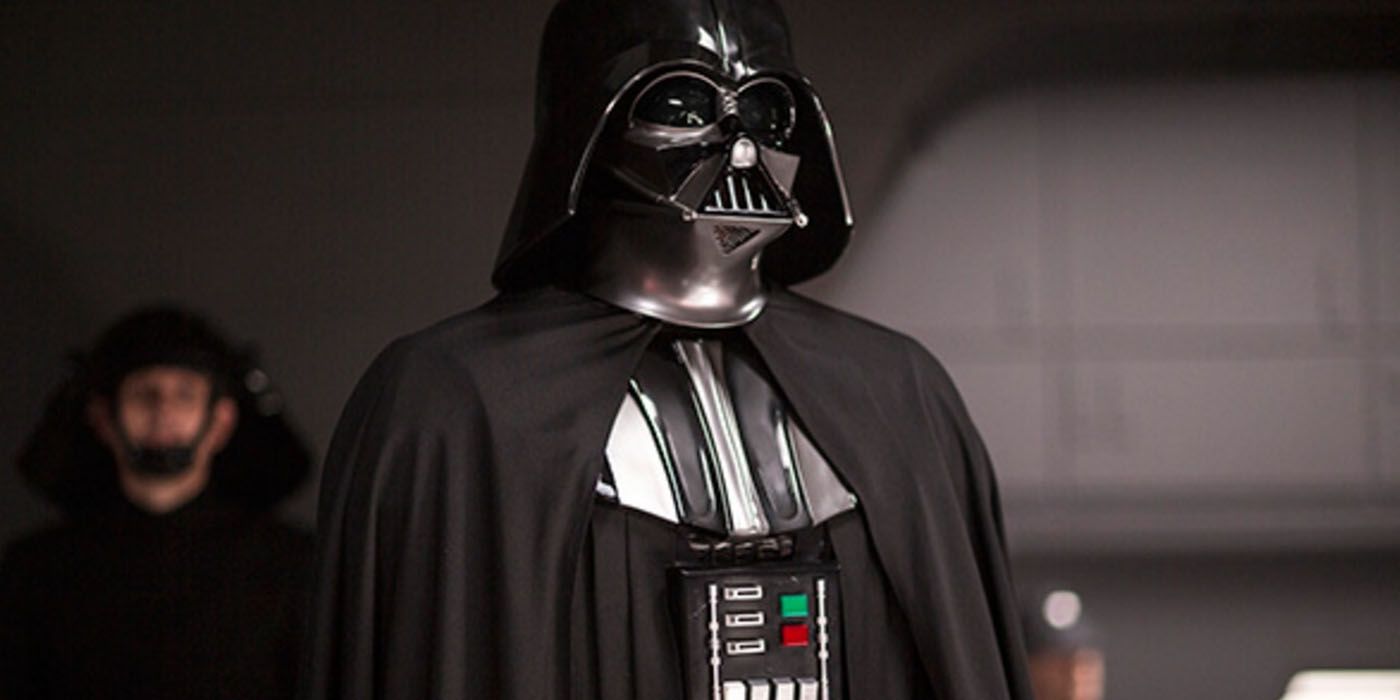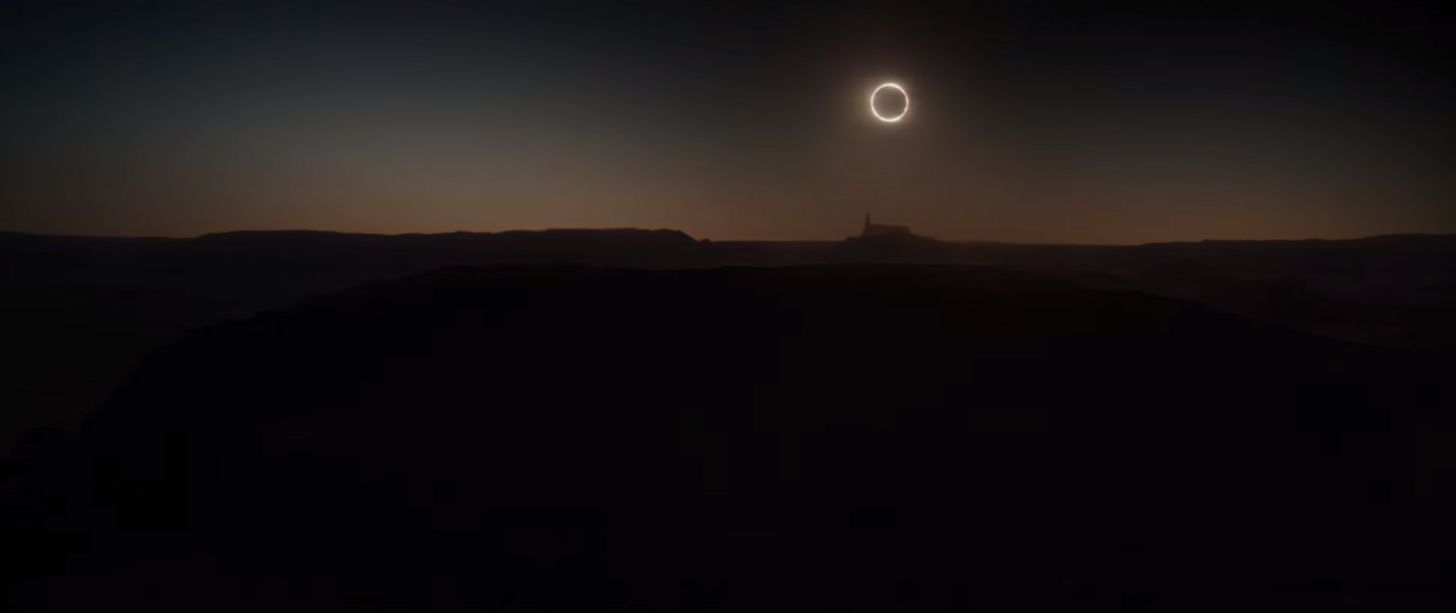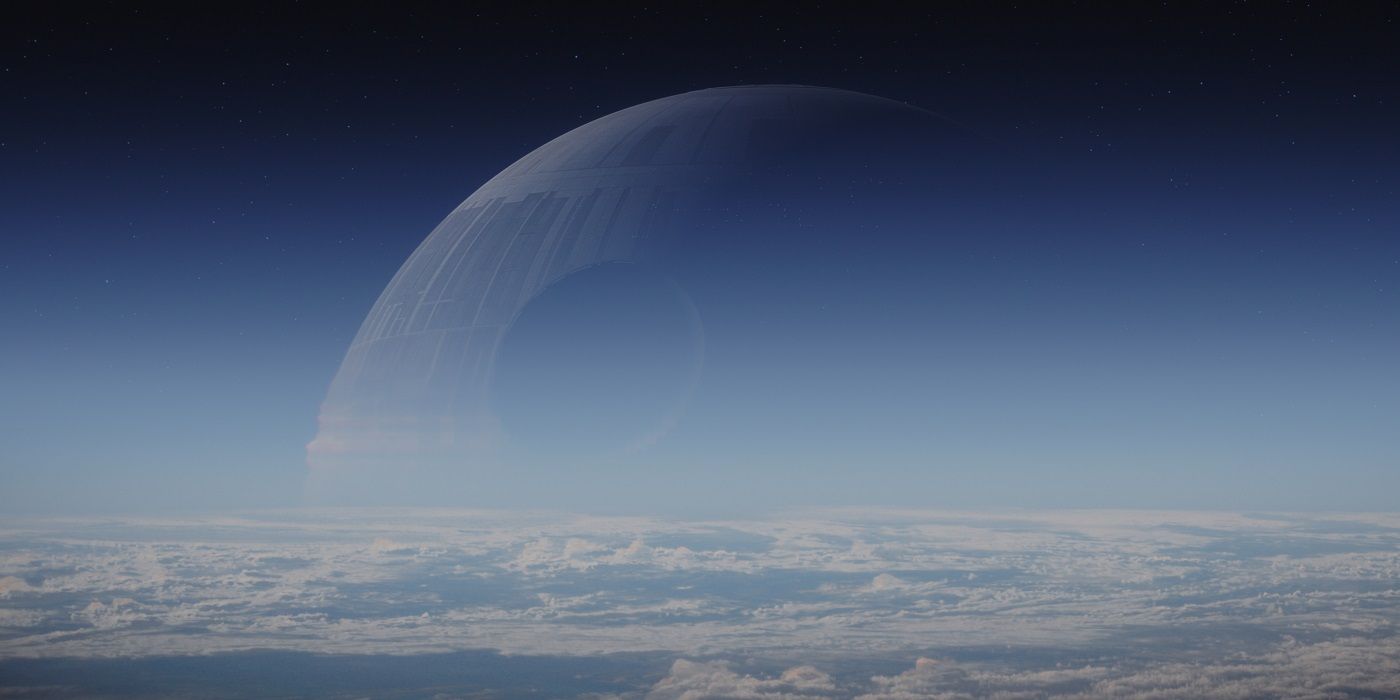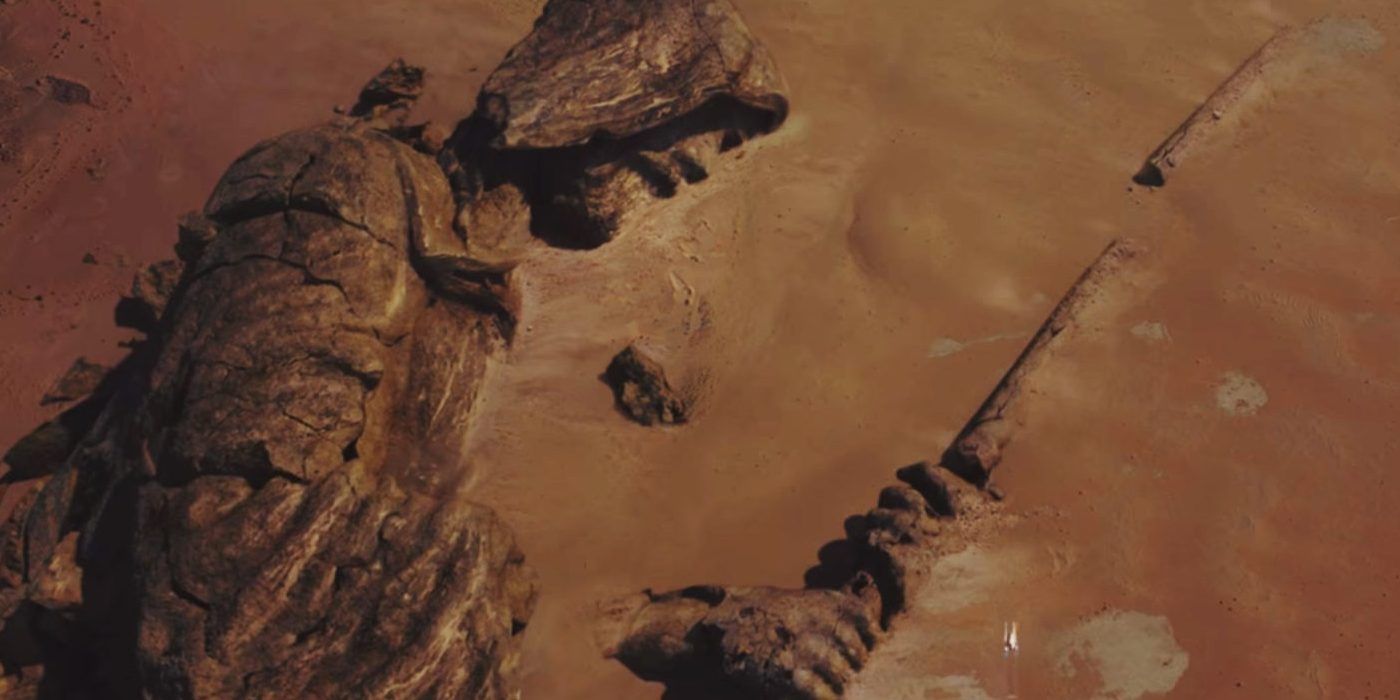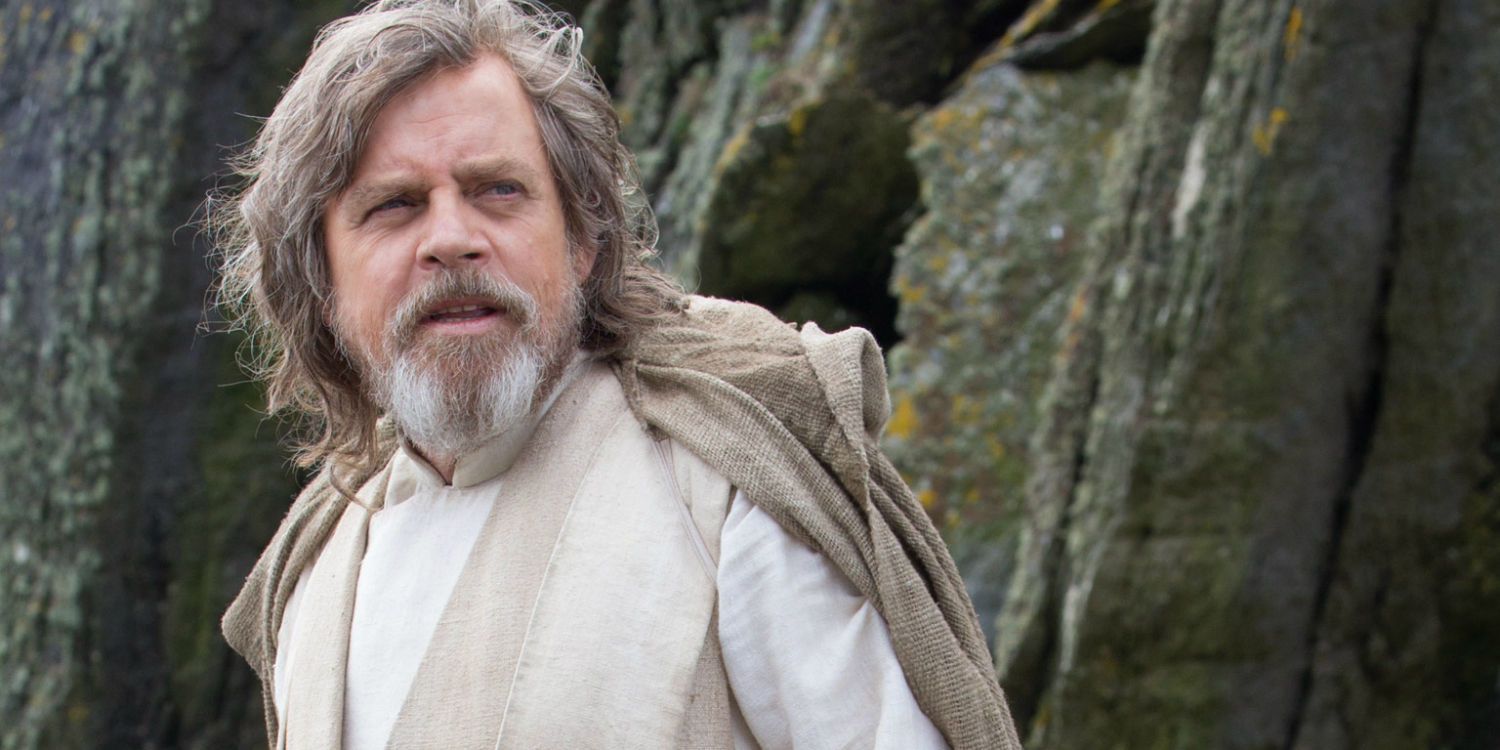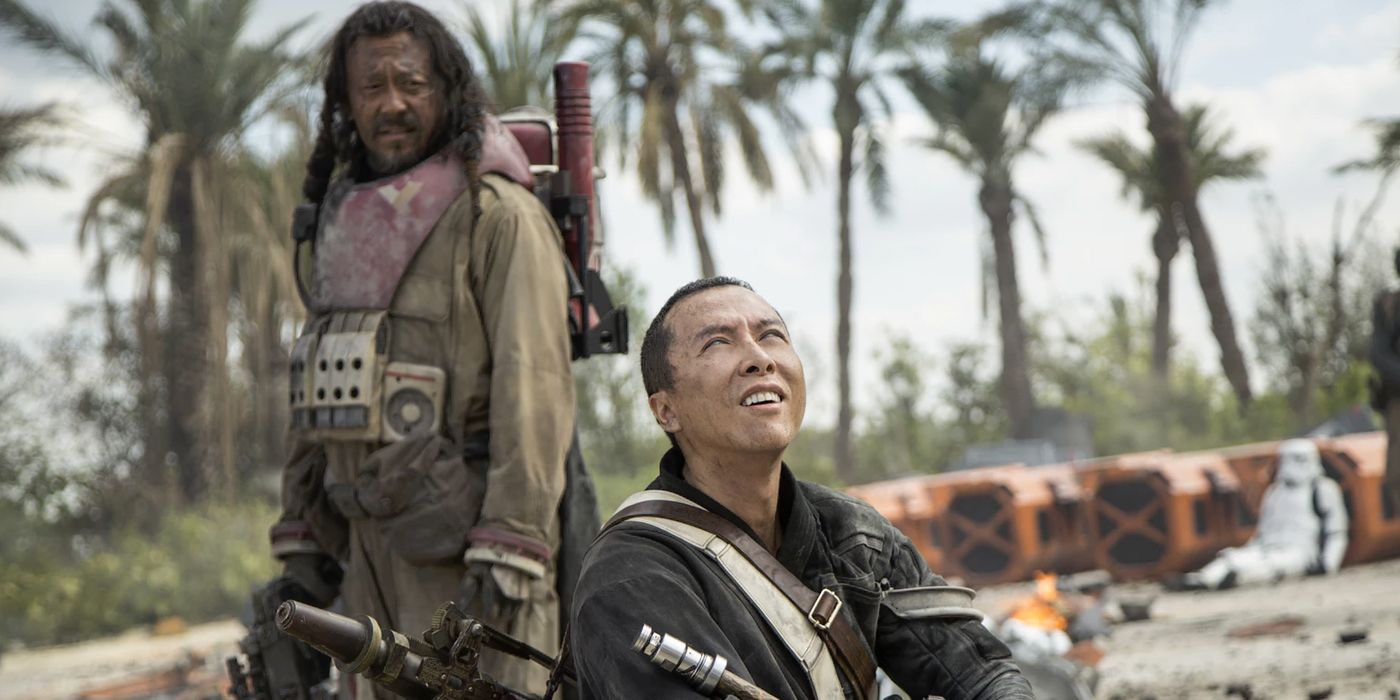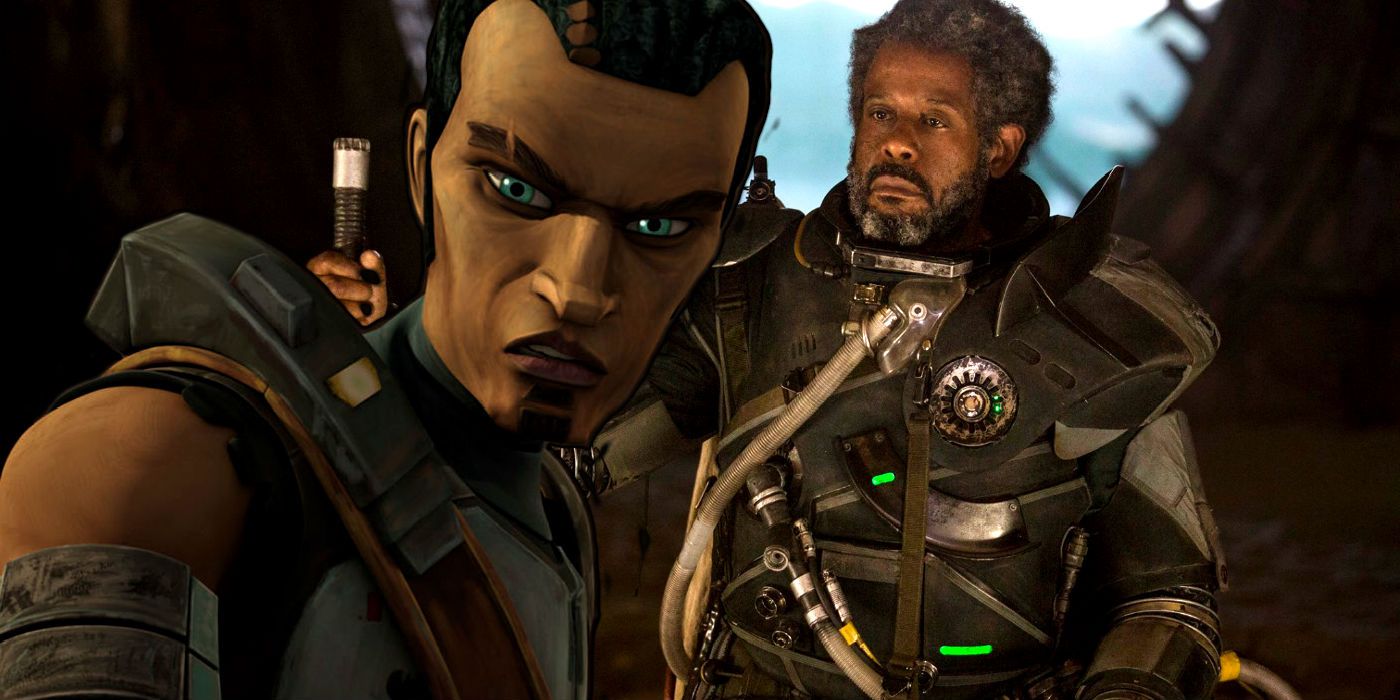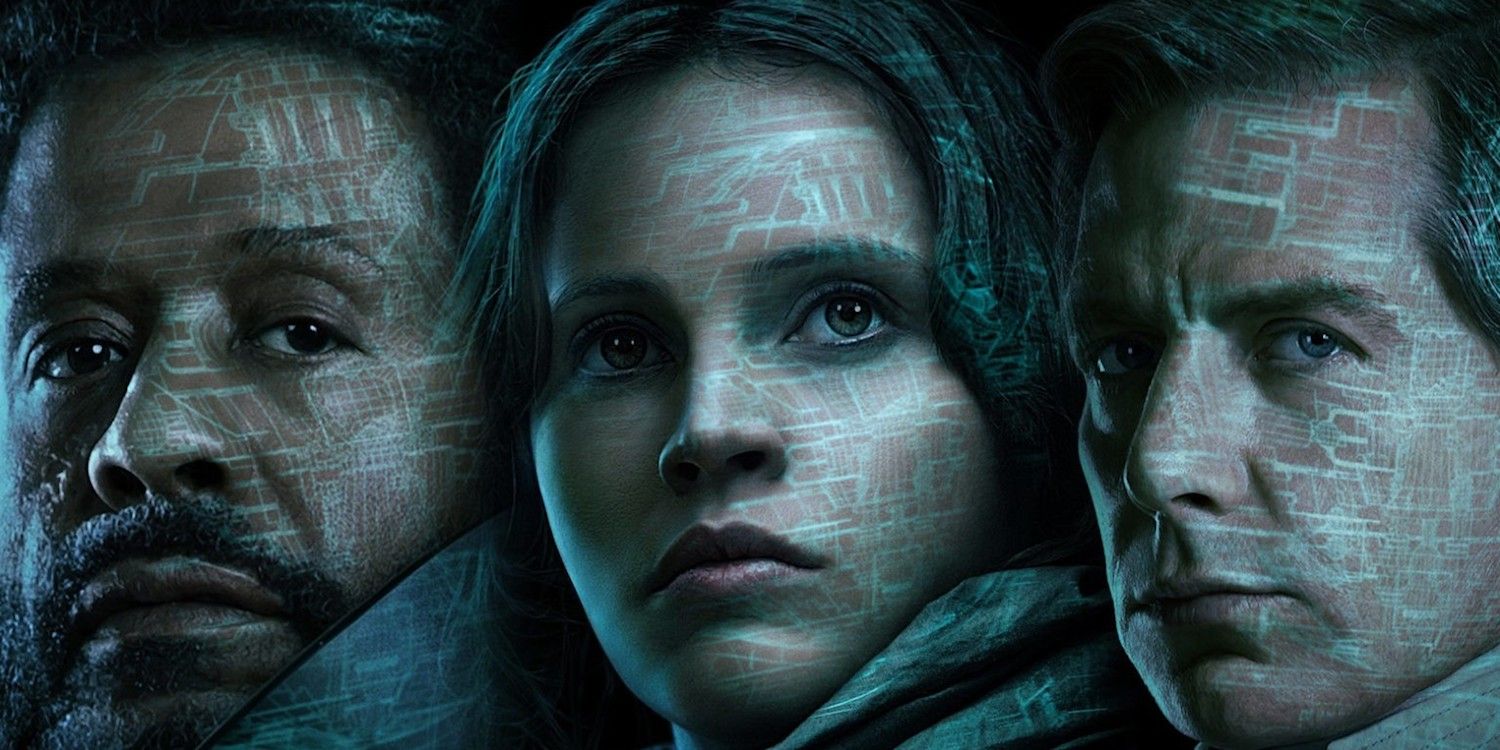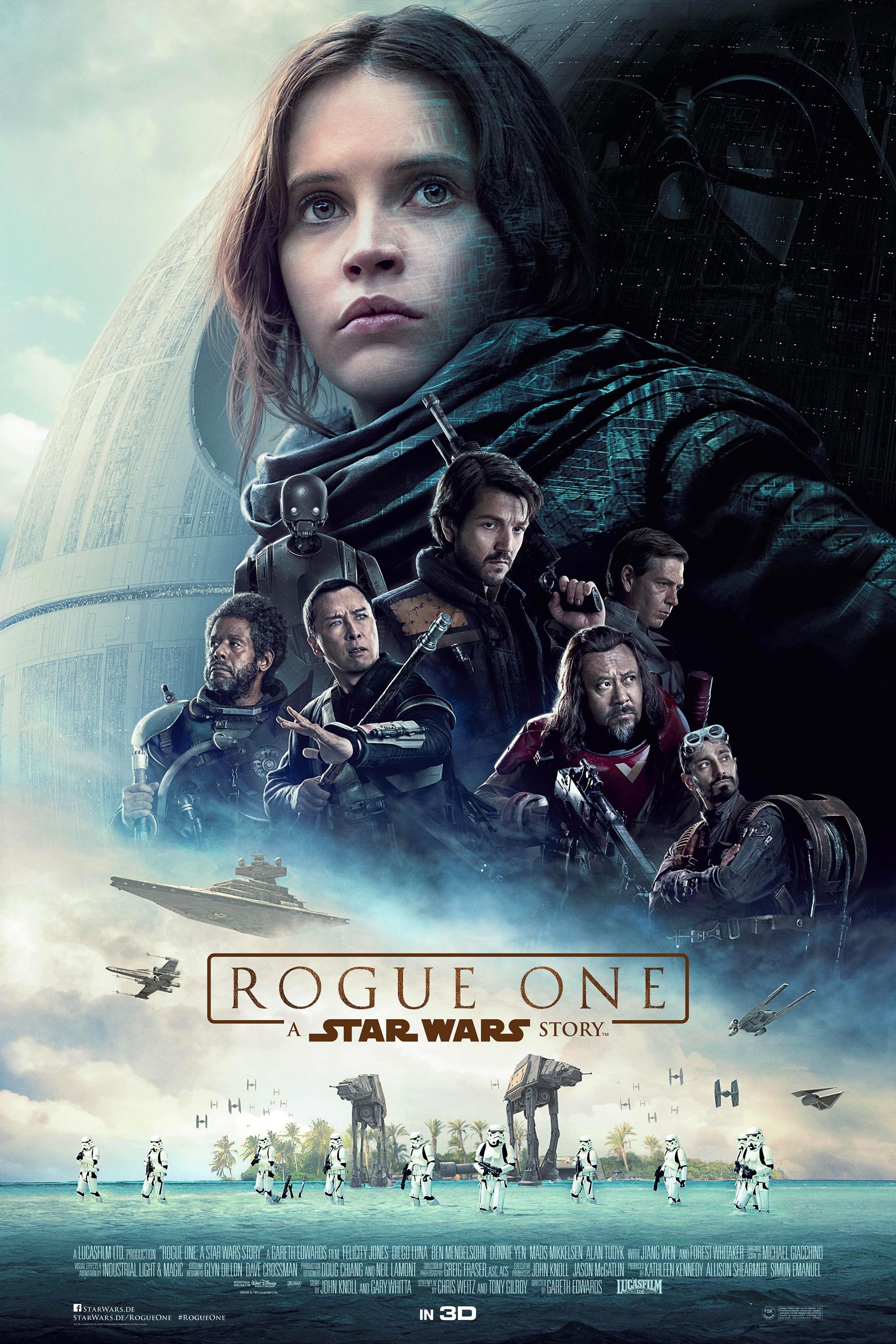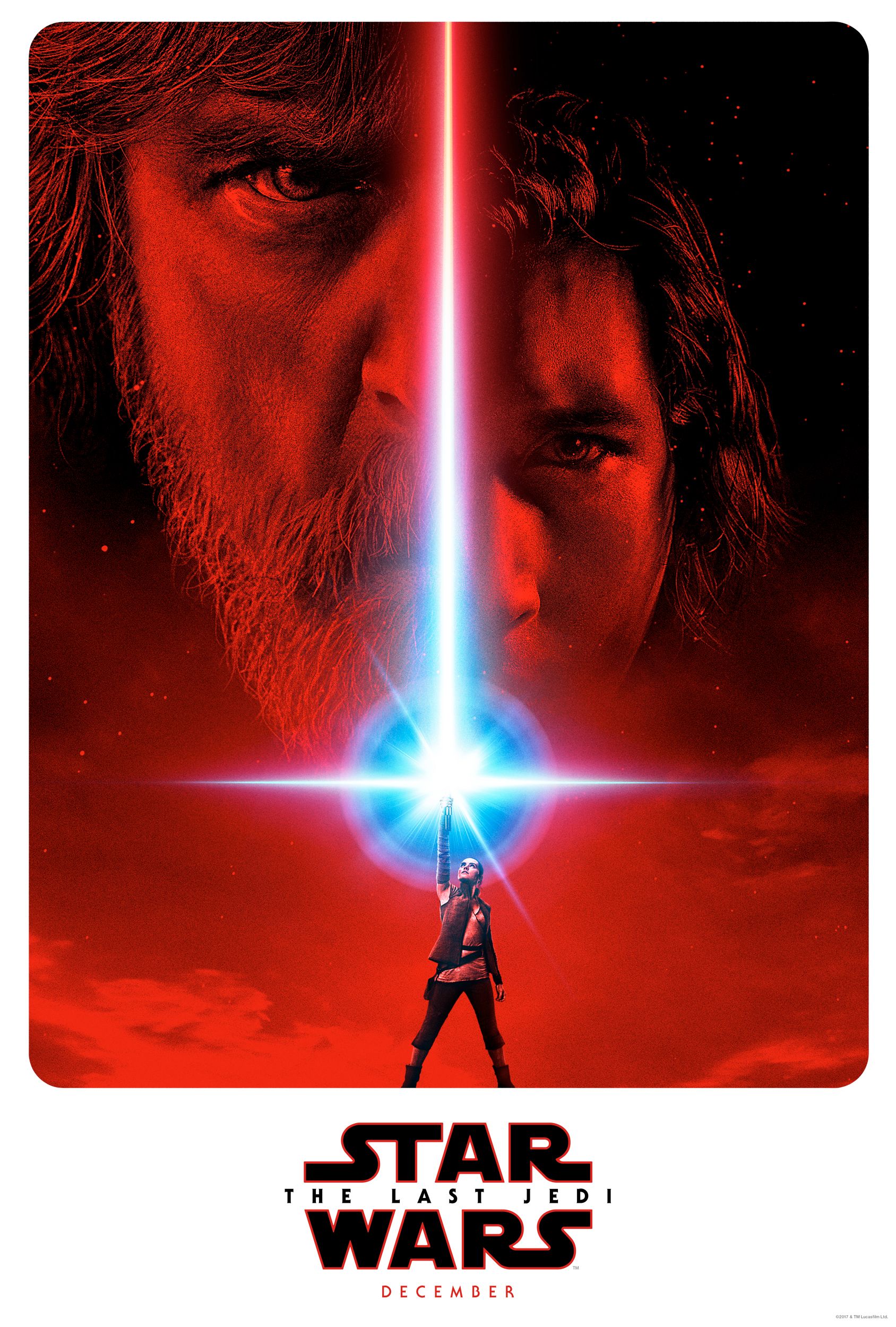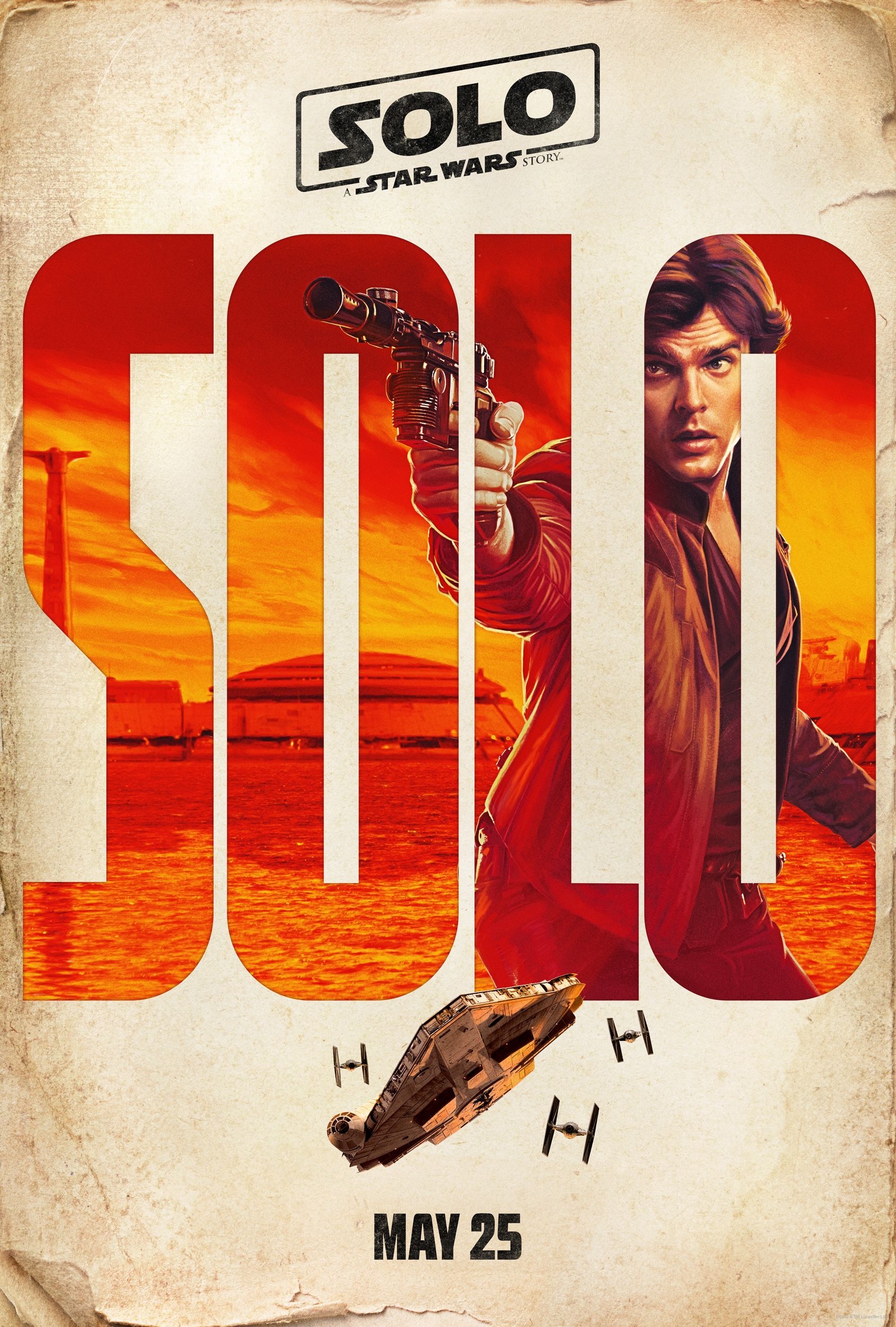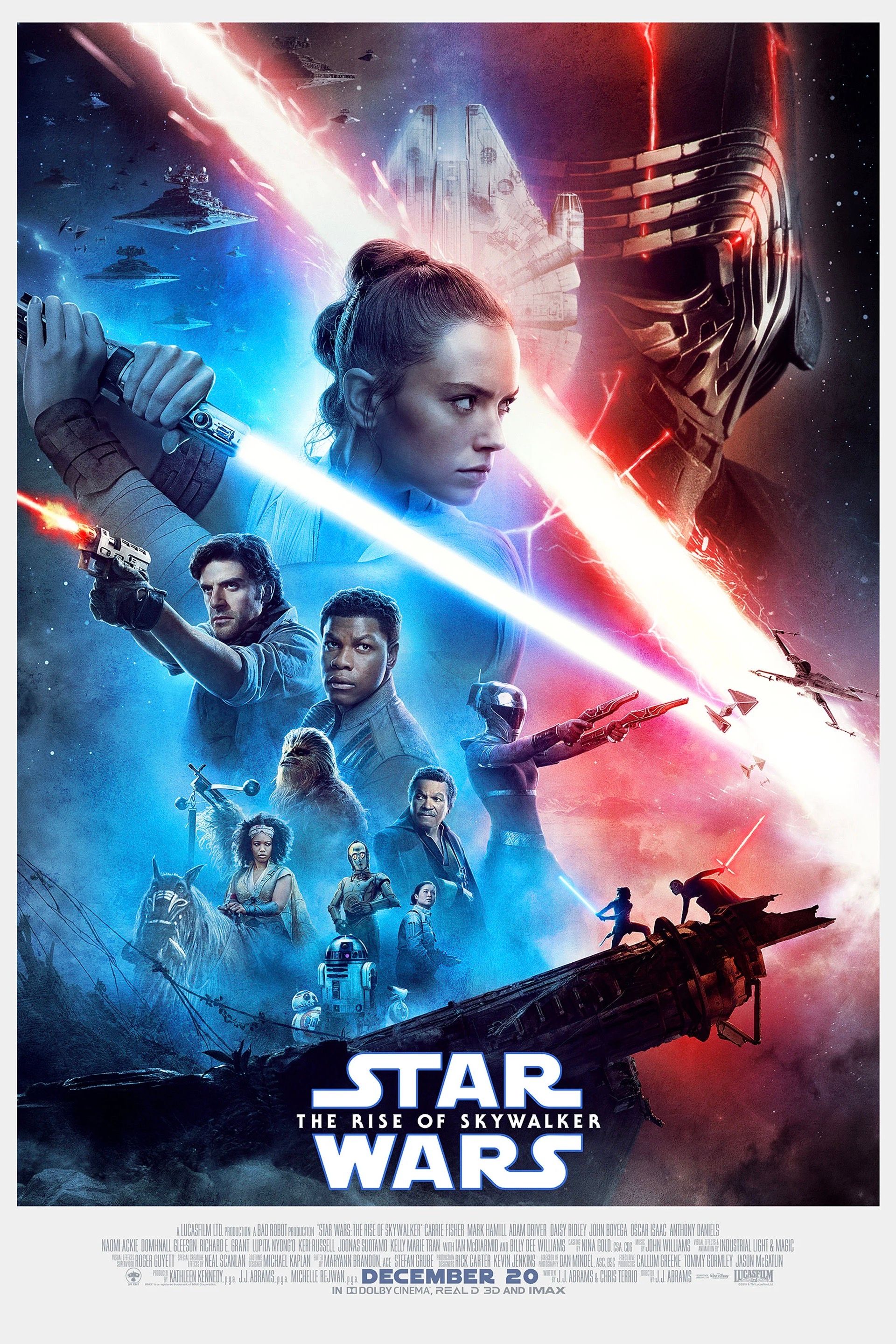The Force Awakens may have brought Star Wars back after a ten year hiatus, providing a modern, nostalgic adventure that showed belief in the Force was stronger than ever, but when we’re looking back at the early days of the Disney era, it may be Rogue One that's remembered as the film that really shook up the galaxy far, far away.
Essentially Opening Crawl: The Movie, Rogue One is an across-the-board success, telling a paradoxically unpredictable story full of instantly memorable characters and weighted by a physical and morally brutal depiction of a galaxy in the midst of all-out war. But, more than a whimsical elaboration on the world of George Lucas' 1977 classic, Gareth Edwards' film, the first in the Star Wars standalone enterprise, manages to adjust how we see the franchise on a fundamental level, and how it operates.
Ranging from in-universe explanations to alterations to the cultural context of the franchise, here are 15 Ways Rogue One Has Changed Star Wars Forever.
-- Rogue One SPOILERS lie ahead --
15. Prequel Is No Longer A Dirty Word
If you take one thing away from this article, let it be this. For Star Wars fans, the word “prequel” is second only to "Holiday Special" in terms of its dirtiness (and there they at least have Lucas’ agreement on). The Special Editions may be abhorrent meddling with film history, but at least they are at their heart the original trilogy.
Now, we’re not going to go into a debate about the prequels and their many merits and faults, but it’s fair to say Rogue One has completely changed the weighting of the word. It’s a full-on direct prequel, yet manages to wash away much of the underlying distaste. It’s a great film that at once ties directly into the original movie, yet tells a totally contained, unknown story, giving fans the experience they were hoping to see back in 1999.
What’s most interesting is that, like Star Wars Rebels, the film isn’t afraid of featuring prequel elements, including Coruscant and Mustafar.
14. No Crawl
It's been a topic of major discussion over the past few months (despite never being on the cards), and when fans finally sat down for the latest Star Wars adventure, it was finally confirmed: Rogue One doesn’t have a crawl. Instead of the famous blaring of John William’s score and flying expositional text, the film simply dove straight into the action after the “A long time ago…” card.
Rogue One isn’t the first Star Wars movie released theatrically to not have a crawl – The Clone Wars opened with a newsreel-style summation of the conflict – but it is the first under Disney and, unlike that glorified pilot, sets a trend that is now going to repeat in 2018’s Han Solo and the likely many more “Story” movies to come.
There’s some controversy around the decision, but, really, it’s ultimately the right choice. Rogue One isn’t a standard episode, and thus not part of the ongoing Star Wars serial, so there’s no purpose of having the crawl in there.
13. Actors Can Be Brought Back
It was reported back in 2015 that it may be happening, and teasing trailers only deepened the mystery, but until he turned around to face Krennic, you couldn’t quite believe it; Lucasfilm had digitally resurrected Peter Cushing to reprise the role of Grand Moff Tarkin. And he looked pretty damn incredible. Yes, you can see the lines if you looking close enough, but that’s more a result of the audience knowing he can’t be real and thus being subconsciously over-analytical than the effect quality.
This isn’t just a one-and-done trick either, with the film also offering up a youthful Red and Gold Leader and, as a cherry on top, a de-aged Leia.
This is setting a major precedent for all of cinema, but it’s especially pertinent to Star Wars – they can now bring actors back to life, so to speak. It’s not going to be as essential going forward, as future standalones are less likely to skirt quite so close to previous movies, meaning the absence of characters with dead actors will be less noticeable. It does, however, vastly open the possibilities for the future; who knows what the Han Solo movie will contain.
12. There's A Reason The Exhaust Port Exists
One of the biggest recurring (if often jokily so) fan complaints about Star Wars is the Death Star’s weakness -- why did the Empire allow a reactor shaft to be so easily accessible and how did such a convenient fault exist in the first place? Well, Rogue One provides an elegant, hope-filled explanation: it was intentional.
The entire reason Jyn Orso is so driven to steal the Death Star plans is because she knows that her father, Galen, has built an almost unnoticeable flaw into the station. No wonder Mads Mikkelsen has been so enthused about being in Star Wars; he plays an incredibly essential part in the mythology.
There are several parts of Rogue One that play with the established continuity, but this is by far the biggest, reframing the start of the Rebellion’s victory as a long-gestating plot. It ties neatly into the film’s themes of time, but, more importantly, elegantly gels with everything in A New Hope, not contradicting anything about the 39-year-old classic.
11. The Music Can Work Without Williams
This one’s a little contentious, as the music has proven to be one of the most common criticisms of the film. Although, as with some finding CGI Tarkin shaky, that may be more a result of knowing what's happening behind the scenes. This is the first proper Star Wars score to not be done by John Williams (Kevin Kiner's work on The Clone Wars doesn’t... doesn’t count), and Michael Giacchino came in at the last hour to replace Andre Desplat, giving him only four weeks to score the whole film.
But take away over-reading, and what Giacchino has done on a basic level is masterful. His entire score is evocative of Williams’ early work, in particular A New Hope, yet there’s very little active reliance on the iconic motifs, with those only appearing at very key moments.
John Williams has been one of the few people to work on every major Star Wars films, leading to a lot of worry about how the galaxy would sound without him. While it’ll be a long time before he’s done his last score (he’s currently working on Episode VIII’s, and you can bet it won’t be too long before he starts on IX’s), Rogue One’s balanced soundtrack shows that there are some talented individuals that are up for inheriting the lofty title of Star Wars composer.
10. The Whills Are In The Movies
They may be infinitely less recognizable to Star Wars fans than Darth Vader, R2-D2 and Jar Jar Binks, but the Whills predate all of them. In fact, they predate the name Star Wars itself: the original treatment for what became Star Wars was titled Journal of the Whills: Part 1 (yeah, it’s not as catchy).
Lucas’ original idea for the saga was that it was an old story being relayed by an ancient race, the Whills, something that was dropped because it’s pretty out-there (although “a long time ago” remained as a reference to it). Their presence was a mysterious possibility for decades, and finally, in the past few years, they’ve been worked into the canon proper. They appeared to Yoda in The Clone Wars series and in a quote from the Journal in The Force Awakens novelization. That’s nothing on Rogue One though, which actually namechecks the species. Chirrut Îmwe is a Guardian of the Whills, who are followers of the Force and historical journal keepers (similar to Lor San Tekka in The Force Awakens).
After forty years, the Whills, the kernel of Lucas’ idea for Star Wars, have made it into a movie at long last. A staggering achievement for sure, and one that could set the groundwork for his original vision to finally come to life. No wonder he liked this film so much.
9. Diversity
Star Wars was never exactly a leading force for diversity. The heroes were all white Americans, the villains white Englishmen, with most minorities appearing in smaller roles or represented through questionable alien caricatures (especially in the prequels, oddly enough).
With that in mind, it’s hard to miss that Disney-era Star Wars is making a real push for a more all-inclusive universe. The Force Awakens tried to better represent the world we live in with its lead trio, but Rogue One takes things a step further. Not only are the main heroes of Mexican, Chinese and British Pakistani descent with a female lead, but that the Death Star plan heist was done by such a diverse group is core to the film’s theme about unconventional heroes.
Episode VIII will definitely be maintaining this thread, with Benicio del Toro and Kelly Marie Tran joining The Force Awakens’ cast, by which point Star Wars will have really changed its reputation and marked itself out as a truly diverse franchise.
8. Darth Vader Is Back (But Different)
It’s fair to say that, after the prequels, people’s perceptions of Darth Vader had shifted massively. Gone was the Dark Lord who struck fear into a galaxy of rebels and a generation of children, as he'd been replaced with a bratty teenager who hated sand and whose turn to the Dark Side was driven by lust for his childhood crush. It goes without saying that Rogue One brings things right back round, with a Vader who commands unspoken respect and, in the final ten minutes, is more badass than ever before.
Director Gareth Edwards doesn’t just return Vader to his previous throne of the series’ primo villain, but actually improves his stance. The way Rogue One tells it, Vader’s a myserious figure seen only by the Imperial top brass, pulled out of the shadows by the Scarif heist, in turn leading to his familial run-ins from the original trilogy.
There’s also an attempt to normalize some of the prequel elements in fan’s minds. The legendary villain is introduced in crispy Hayden form on Mustafar, the site of his fateful duel with Obi-Wan from Revenge of the Sith, and his tactics in the final battle (jumping out of hyperspace into the middle of a battle) are straight from The Clone Wars.
7. The New Star Wars Filmmaking Style
Star Wars has its own clearly defined, irreplicable style -- a mash-up of Flash Gordon camp, New Hollywood character drama, and war movie epicness. It’s a formula that transcends plot and character, and has meant that you can always recognize a movie set in a galaxy far, far away from the simple feel of the proceedings.
Rogue One, however, changes all that. It ticks a lot of Star Wars boxes design-wise, but the filmmaking approach is rather different (and the lack of crawl is just the start of it). The trademark wipes are gone, replaced with cross-cutting, and location cards guide the audience on the adventure, making the world feel larger and more real. Tthe cinematography, meanwhile, has switched to suit the director. Star Wars always had simple-yet-grandiose imagery, but never anything with the scaled beauty Edwards brings (and the same goes for his more down-and-dirty action).
This isn’t to say the Star Wars filmmaking style has changed, rather that the film shows that it can be, opening up even more exciting avenues for the future. Episode VIII will no doubt be more traditional, but who knows what Phil Lord and Christopher Miller are cooking up on Han Solo.
6. The Death Star Was A Secret
In addition to revealing that Galen built an intrinsic flaw into it, Rogue One vastly expanded our knowledge on the Death Star. Its construction, the battle for control, and its capabilities (the superlaser's power was variable and it has a hyperdrive) are all new details for Star Wars fans to sink their teeth into.
Most exciting is the retcon that the Death Star was actually a closely-guarded secret until the moment of its untimely destruction. The Rogue One tie-in novel Star Wars Catalyst already showed it had been quietly in development since before the end of the Clone Wars, but the movie is pretty much motivated by the Rebellion's discovery of such a disastrous threat. It's not the impression the original movie gave, but it certainly doesn't contradict it.
This is in fact just part of a subtle expansion on the politics of the galaxy. It may not dominate the proceedings a la The Phantom Menace, but Rogue One manages to still explore the Imperial bureaucracy glimpsed in the original movie's boardroom scene and present some real Rebel indecision about whether they should commit to all-out war (Bail Organa’s brief subplot basically sees him give up on diplomacy).
5. It's Made Legends (Formerly Known As The Expanded Universe) Mainstream
Ever since George Lucas traded his director's fee for the franchise rights, Star Wars has had a world much, much bigger than just the movies, with books, comics, TV shows, games and more detailing a complex, sprawling narrative spanning from the creation of the galaxy all the way up to centuries past the films themselves.
However, so much of this content, whether it’s the now non-canon Expanded Universe Legends or more recent endeavors like Rebels or the Marvel comic runs, was typically focused singularly at die-hard fans, with most general audiences knowing little beyond the basic stories of Anakin and Luke (and now Rey).
Rogue One changes that. Detailing a piece of backstory featuring none of the main characters and featuring all sorts of obscure references front and center, it's a story that would traditionally have been the subject of a book at best read by a fraction of those who’ll see the movie. Instead, as the tentpole cinematic release it is, more so than The Clone Wars or any New York Times bestseller ever could, the first piece of the expanded stories have gone mainstream. What this means long term is up to the Story Group, but don’t be surprised if Star Wars willingly embraces its more geeky, abstract concepts on film in the future.
4. The Episodes (And The Skywalkers) Aren't Essential For The Future
There must have been a lot of sighs of relief at Lucasfilm over the past few days. Not only was Rogue One praised by critics and fans (a rarity in 2016), a Star Wars film separate from the main story (and set thirty-five years before last year’s smash) was a box office hit, performing better than anybody, perhaps even Disney CEO Bob Iger, expected.
And that is, of course, what Rogue One’s real purpose is. Yes, telling a key part of Star Wars history is obviously very cool, but as the first Anthology film, this flick is testing the waters for whether telling tangential stories can work. The Skywalker story can’t go on forever -- at some point around Episode XII the numbering would become ridiculous and you’ve gone from space opera to soap opera -- so expanding the universe in other directions is the best way to do it. But only if audiences bite.
Bit they have, which means the outcome of the Story Group’s upcoming January meeting will likely be to move forward with the galaxy's expansion, spinning off into new adventures (perhaps even trilogies) across the timeline. Y’know, just like the EU.
3. The Force As A Religion
One of the biggest changes that’s been made to Star Wars mythology during Disney’s tenure is the way the Force works. As originally presented, it’s just a way to explain magic in a sci-fi film. But, taking the cue from Lucas -- who tried to expand things in the prequels, but held back (possibly because of the midi-chlorian backlash) -- The Clone Wars and Rebels vastly expanded the scope, with numerous offshoot groups beyond the Jedi and Sith.
Movie-wise, The Force Awakens hinted at some of this, with a less rigid Light/Dark structure allowing for a greater sense of the moral grey. But Rogue One really got into the nitty gritty and, fitting of a ground-view of Galacti conflict, showed the other side: belief. The way it’s now told, through Chirrut and Baze, is that being a Jedi -- using the Force for telekinesis, mind control and lightning bursts -- is something only the most adept users can do, but regular citizens still have some connection and are able to access the Force in subtle ways with extreme concentration.
There was always a religious aspect to the Force, with Han’s skepticism hinting at a belief system and strong Buddhism parallels, but now Rogue One’s made it clearer and, yes, magical.
2. Seamless Synergy With TV And Books
When Disney got rid of the Expanded Universe, it was presumed to be a movie purely meant to allow filmmakers to make movies without having to deal with decades of usually contradictory tales that varied widely in quality (the history of the Death Star plans alone was a labyrinthian headache). However, Rogue One reveals there’s more to it than that, with Lucasfilm looking to take a more synergized approach.
Most notably, Saw Gerrera originates from The Clone Wars series, having been trained in combat by Obi-Wan and Anakin. There’s plenty of other examples of elements lifted from the wider universe, as Kyber crystals originate in George Lucas’ early drafts and appeared heavily in The Clone Wars, while the Hammerhead ships were acquired during Rebels. But then, on the flipside, there's no shortage of references to Rebels that would seem to point towards a crossover episode showing the Ghost crew involved in the Battle of Scarif just offscreen.
This paints a very different storytelling approach to the “movies first” ideology of Lucas, with everything linking up. Of course, films will always take priority with audiences, but for those looking for a more wide-reaching story, there’s a very unique shared universe in there.
1. How Standalones Work
Before Rogue One, we had no idea how a Star Wars Story would actually work. Were they going to be following the Marvel structure, with narratives that explicitly tie into the ongoing franchise? Was it going to be all about simply providing backstory to existing characters?
In the end, when they’re described as standalones, that’s exactly what the producers mean. Rogue One is an unconventional story with a set ending that exists purely for its own merits, rather than desperately setting up the future (it had plenty of A New Hope links and easter eggs, sure, but they all felt very organic to the main focus and strengthened its place in the world). And that feels like it'll be the defining trait of the series going into the future.
This establishes the Star Wars Stories as something very unique in modern Hollywood. Most tentpole movies are desperate to spawn a franchise and thus inevitably spend far too much time setting up future adventures or otherwise leave too many threads dangling (see: Independence Day: Resurgence). But given the power of the Star Wars name, the spinoffs don't need to prove themselves; they can just exist, with the focus entirely on the experience.
---
Rogue One is in theaters now.

